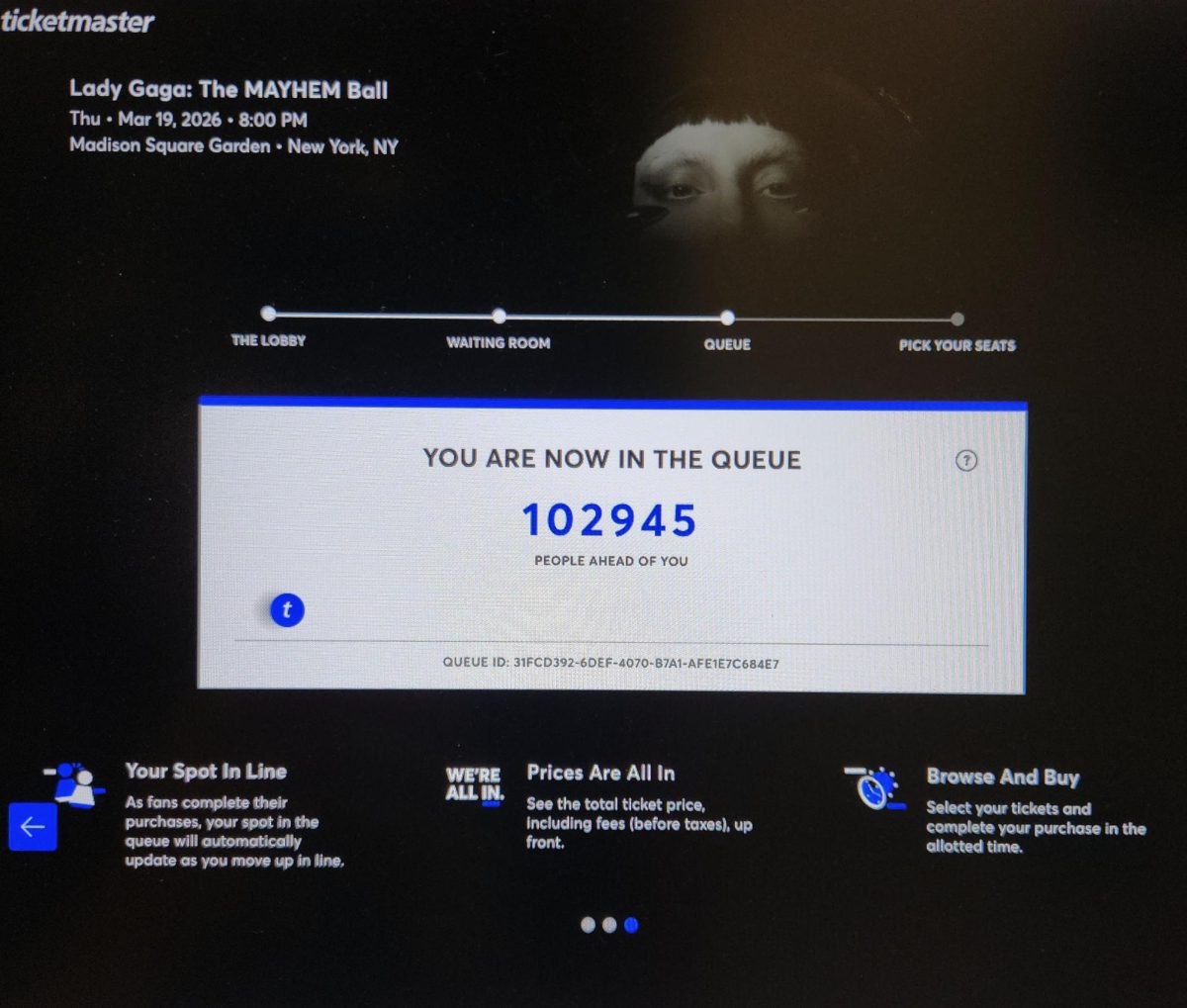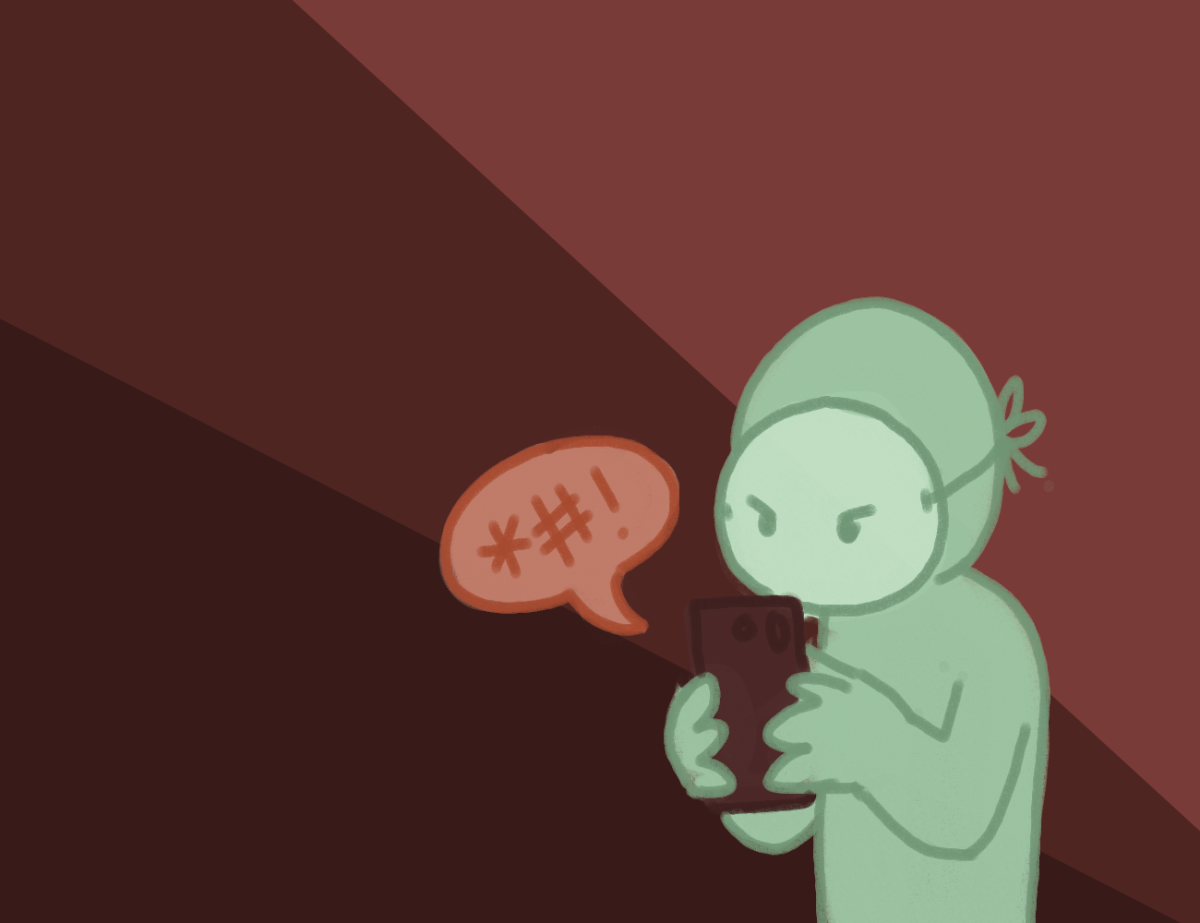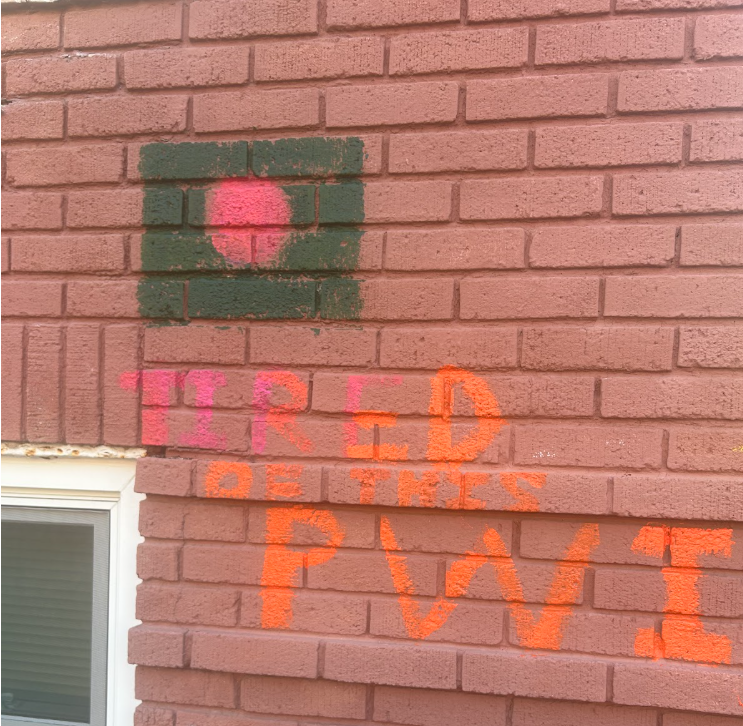The Idea Lab is at once an art studio, a research facility, a collaboration venue, a social nexus and a grand experiment. It is also perpetually a punching bag for the malcontent. Those doing the punching should understand exactly what and who they are hitting.
I run the Dev Garden, a service for students of all disciplines to get help with software-related projects. The Idea Lab is our home, happily nestled alongside students with looms and markers and laptops and — yes! — books. Here are some of the ways we used the space this year:
Asia Sageman ’18 ingeniously assembled scraps of paper and colored tape to make a rearrangeable mockup of a relational data model she can use to visualize the migrations of Ottoman Armenians.
Cuauhtemoc Cruz Herrera ’19 set up a website for his educational program that provides free advanced mathematics instruction to primary students in Mexico. As we worked on getting his site online, one of the Idea Lab’s movable whiteboards filled with a diagram of the many network protocols that combine to create the web.
Haimeng Zhang ’18 created original watercolor artwork for her software team’s mobile game/interactive art piece, then worked with Matt Bonazzoli ’18 in Photoshop to scan and prep her paintings for algorithmic compositing.
Steven Roach ’18, Hoang Anh Thai Vu ’18 and Charlotte Giang ’21 worked with me to bridge calls between the Swift and C++ programming languages so they could create a 3D scanner iPhone app. They used their app to scan one of the geology’s department’s dinosaurs, and produced a miniature replica of it on the Idea Lab’s 3D printer.
These students do amazing work. It distresses me to hear that work denigrated, both in The Mac Weekly and across campus, in conversations public and private. The recent opinion piece in The Mac Weekly, “The Idea Lab: Not an Ideal Image for Macalester,” is only the tip of the iceberg; anger, resentment,and fear utterly mismatched to what actually happens in the Idea Lab surrounded the space long before anyone actually saw it. My fellow faculty and staff, especially the librarians who championed the space from the beginning, have been called vile names I will not repeat in print.
What would motivate someone to declare that these impressive student projects I described do not constitute “scholarship and hard work,” that they are “silliness” that is not “academically rigorous”? Who would tell these students that they have done nothing but “forget their responsibilities and generally goof around?” What is the intent of such attacks? What is their impact?
What traditional hierarchy does the oft-recurring word “sacred” invoke in this conversation? What boundaries does it police? Whom does that hierarchy privilege, and whom does it exclude? These questions are not rhetorical; it is worth asking them in earnest.
The answer is not merely “libraries should be quiet.” The library already has ample (and underutilized) space for quiet reflection; the intensity of the vitriol must surely come from something more than having to walk up an extra flight of stairs. The answer is not merely “but the books.” If you don’t believe me, talk to the librarians about how most just moved to other floors, and how the ones they recently removed had never been checked out, loaned, or even taken off the shelf for decades.
A clue lies in the opinion piece’s word choices: “image,” “reputation,” what the space “communicate[s] to ourselves and our faculty.” An obsession with appearances oft betrays an ignorance of substance. I would encourage the author to remember the old saying about books and covers. Read the book; come visit. Come work with us. Then judge. Or better yet, ask tough questions about the 21st century evolution of the liberal arts without denigrating the work of others.
On a campus that shows disturbing signs of resentment and tribalism between academic divisions, the Idea Lab is a rare pan-disciplinary space. In an organization prone to silo formation, it is an exemplar of collaboration across staff boundaries. It is rightly housed in our pan-disciplinary library, the symbolic root of our intellectual unity. The Idea Lab is a good space in a good place.
There is one epithet often lobbed at the Idea Lab I wholeheartedly agree with: it is like a children’s playground. My four-year-old daughter loves to visit and create art. As she does so, working alongside these students who exemplify scholarship and hard work, she learns that the creativity, curiosity, and purposeful sense of play woven through the arts she creates every day in preschool are cognitively connected to, are the spiritual foundation of, are the raw substance of the life- and world-changing work we all aspire to do at a liberal arts college.
This is a lesson my daughter already intuits perfectly well. She still lives in, as Susan Sontag put it, “that innocence before all theory when art knew no need to justify itself, when one did not ask of a work of art what it said because one knew (or thought one knew) what it did.”
We lose track of this lesson as we grow up, and as we acquire hierarchies of the sacred to enforce. It is a lesson I hope the Idea Lab can help re-teach to all those at Macalester who have forgotten it.







Megan Vaughan • Sep 12, 2019 at 3:51 am
Have you ever considered about adding a little bit more than just your articles? I mean, what you say is valuable and all. However imagine if you added some great images or videos to give your posts more, “pop”! Your content is excellent but with images and video clips, this blog could certainly be one of the most beneficial in its field. Fantastic blog!
Justin Davidson • Sep 8, 2019 at 10:51 am
This paragraph will assist the internet users for creating new webpage or even a blog from start to end.